Taining County, under the jurisdiction of Sanming City in Fujian Province, is located in northwestern Fujian. Due to its rich historical and cultural heritage, it is known as the “Ancient Town of Han and Tang Dynasties, Famous City of the Two Song Dynasties.”
Taining boasts Fujian’s first World Geopark, a National Key Scenic Area, a National 5A-level Tourist Attraction, and National Intangible Cultural Heritage sites. It is ranked among China’s top ten charming ancient towns, alongside Wuzhen in Zhejiang and Hongcun in Anhui.
The beauty of Taining lies not only in its long historical heritage but also in its pristine folk customs and the expansive Danxia landforms. As an emerging tourist destination in recent years, Taining is rich in tourism resources. The most famous among them is undoubtedly the Dajin Lake Geopark, where lakes, streams, pools, and waterfalls blend harmoniously. It features three world-renowned wonders: the “Water Danxia,” the “Grand Canyon Garden,” and the “Cave Museum,” combining uniqueness, diversity, leisure, and culture.
Dajin Lake
Dajin Lake is a rare scenic area that perfectly combines diverse Danxia landforms with vast lake waters, earning it the reputation of “The World’s Premier Lake and Mountain Landscape.” The myriad forms and magnificent Danxia landforms, together with the enchanting and expansive waters of Dajin Lake, create a harmonious interplay of mountain and water scenery.
This unique landscape features mountains within the lake and the lake surrounding the mountains, skillfully connecting the scattered peaks and strange rocks through the lake water, resulting in a vibrant and charming water Danxia paradise.
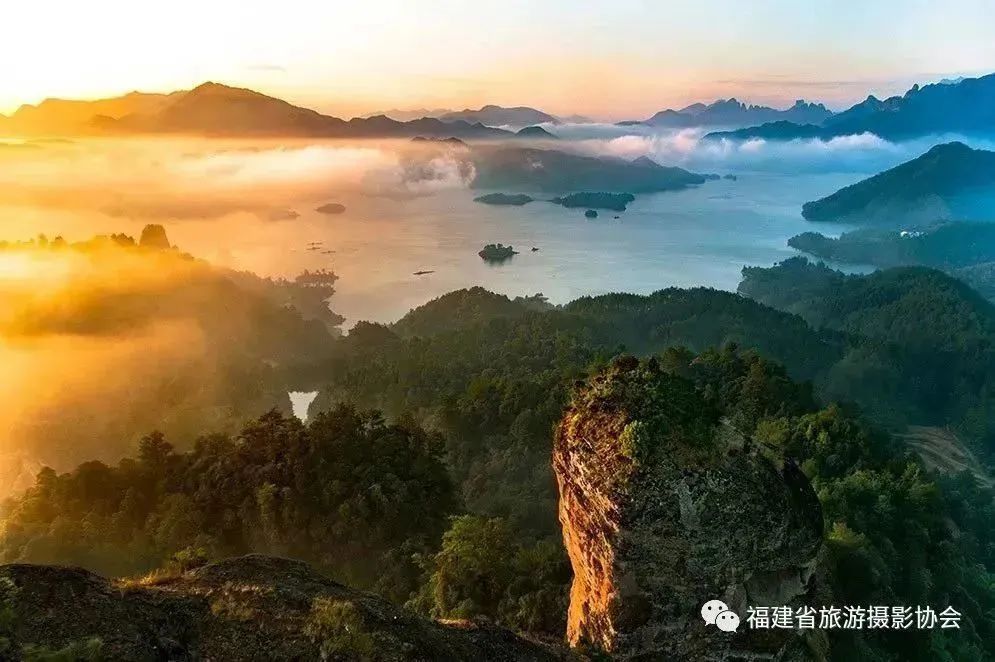

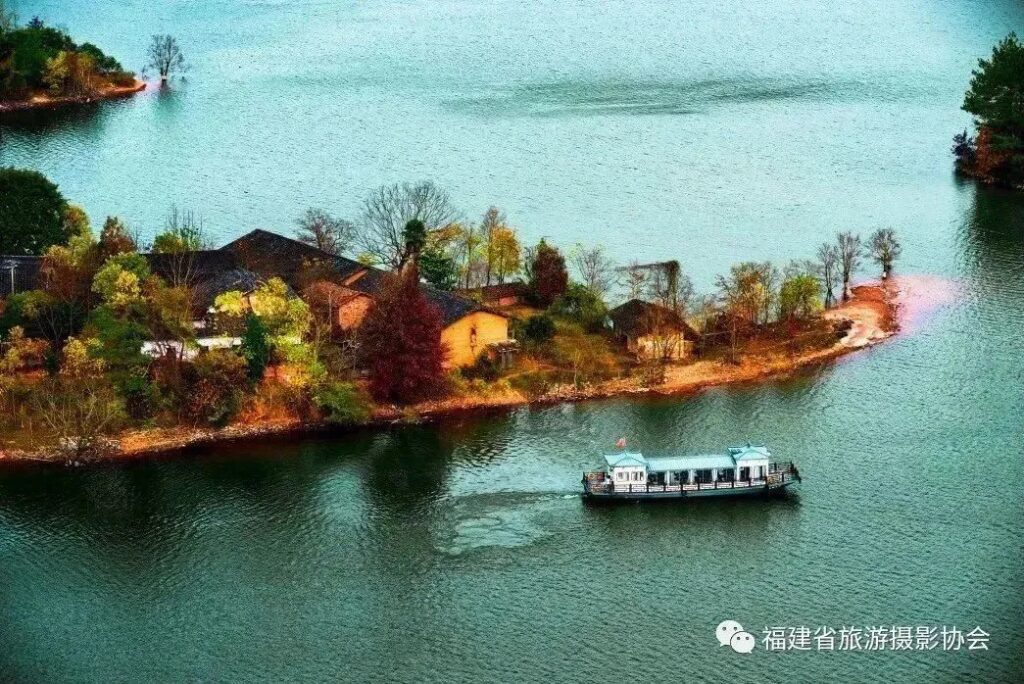
Shangqing Stream
The Shangqing Stream Scenic Area is located upstream of Dajin Lake, about 20 kilometers from the county town. “Shangqing,” one of the three realms in Taoism, is often used to refer to a “fairyland.” The stream in the Shangqing valley is winding, said to have 99 bends and 88 rapids. Riding a bamboo raft downstream between the uninhabited red cliffs and green peaks, visitors can see peculiar rocks on both banks, meandering streams, birds singing in the valleys, and fragrant vegetation.
As Ming Dynasty official Chi Xianfang described the ever-changing scenery of Shangqing Stream: “Each turn reveals a new scene like closing a door, imagining a scene is like turning a dream, encountering a scene is like unfolding a letter, and revisiting a scene is like meeting an old friend.” The uniqueness of Shangqing Stream rafting lies not only in enjoying the primitive and wild rafting experience but also in appreciating the fascinating natural wonders and feeling the infinite charm of “a day in the mountains is like a thousand years in the world.”

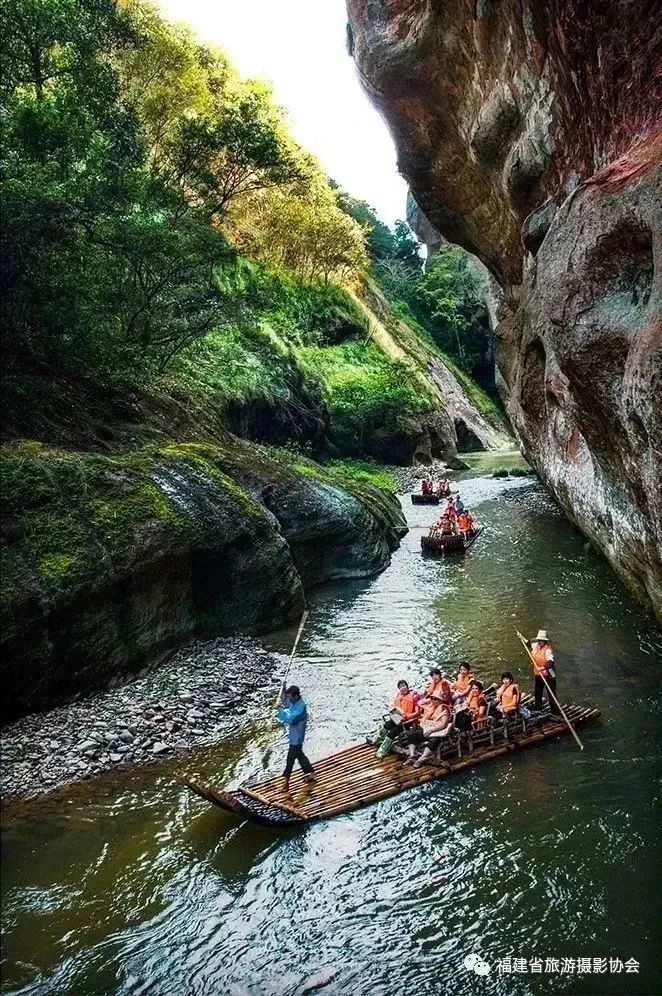
Zhuangyuan Rock
Zhuangyuan Rock is located in the southwestern part of the Shilei Canyon Group Scenic Area. It was the place where Zou Yinglong, the top scholar (Zhuangyuan) of the Southern Song Dynasty, lived and studied as a youth. The cliff face still bears the powerful characters “Zhuangyuan Rock.”
The surrounding landscape features red cliffs, lush forests, unique trees, secluded valleys, strange caves, waterfalls, and springs, creating a breathtaking and beautiful scenery. It is also home to many rare birds and animals. From a cultural perspective, the mountains and waters of Zhuangyuan Rock bear deep imprints of Confucian culture.
With cliff-side scriptures, literary peaks, dragon and tiger-shaped mountains, and the legacy of top scholars, it has attracted generations of students to visit and seek wisdom. Later generations regarded it as a sacred place for educating children to study diligently.
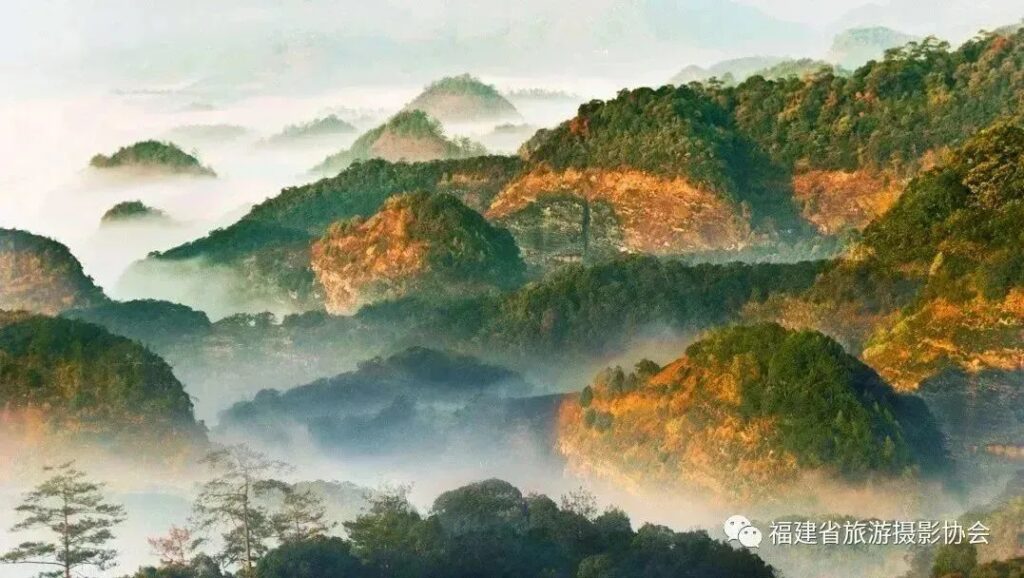
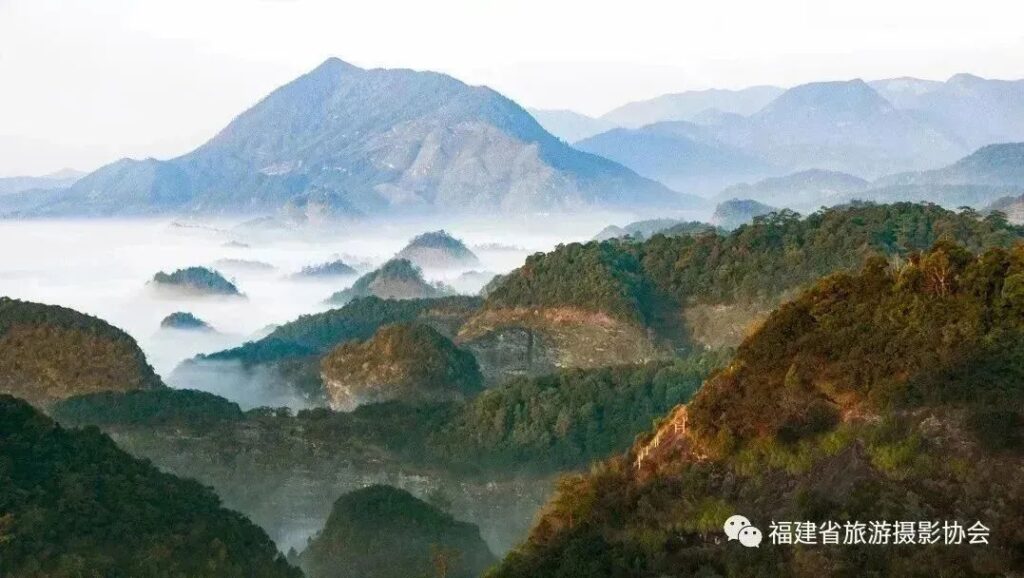
Cat Mountain
The Cat Mountain Scenic Area is located downstream of Dajin Lake. It got its name from the cat-like appearance of its rocks and is also known as “Luohan Mountain.” The area is famous for its “Three Sword Peaks,” with the highest peak being “Cat Peak.” From different angles, visitors can see the Three Sword Peaks piercing the clouds, Cat Mountain crouching as if surveying the world, and Fairy Peak gazing as if looking for her husband.
This single mountain with three distinct forms is truly a masterpiece of Danxia landforms. Climbing to the top of Cat Mountain, one feels immersed in a painting, with the shimmering lake waters and the three lakes vying for attention, while peaks and waters stretch as far as the eye can see, filling the heart with joy.
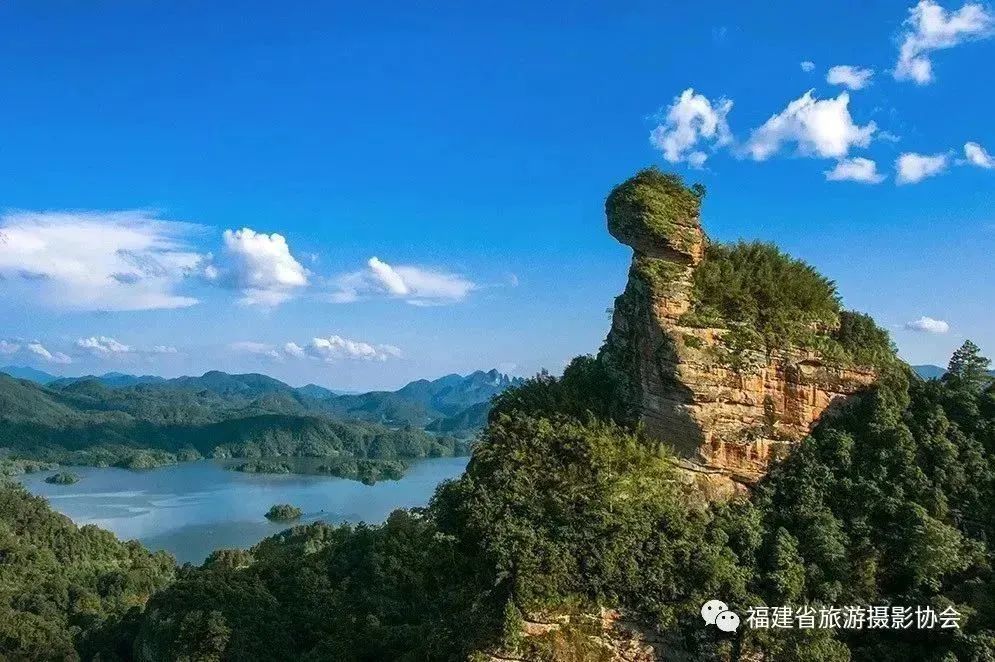
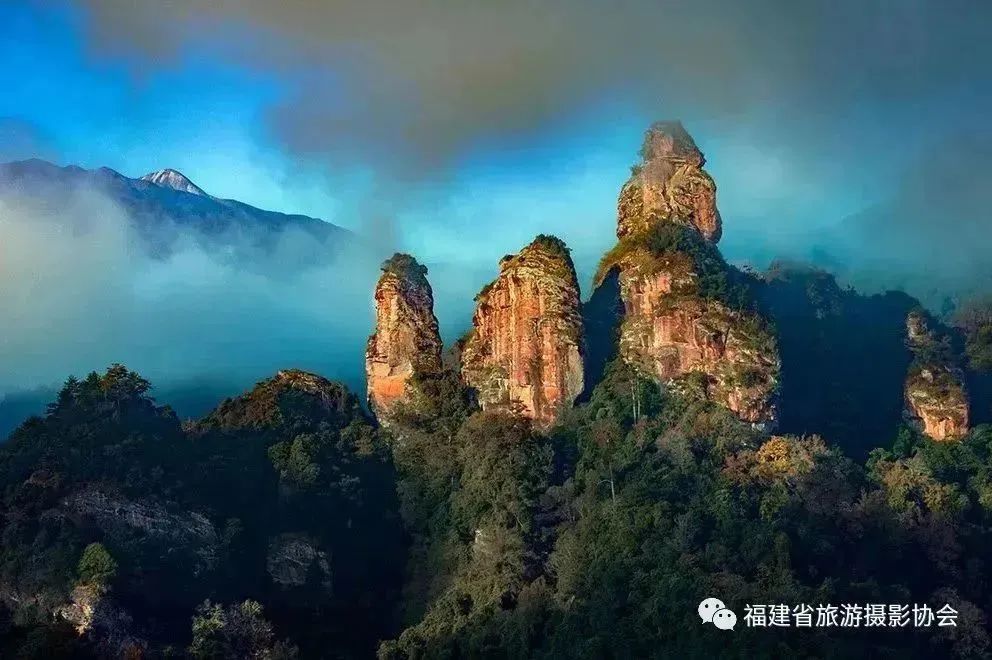
Ganlu Temple
Ganlu Rock Temple is located on the west bank of Taining’s Dajin Lake, on the western side of Changtan Human-shaped Mountain. It is one of China’s two hanging temples and the most famous rock temple in Taining. The temple got its name “Ganlu” (Sweet Dew) from a dragon head-shaped stalactite above the temple’s rock cave that drips water at intervals.
The entire temple is hidden in a large rock cave, adopting a unique architectural structure of “one pillar inserted into the ground, without using a single tile.” Built without a single iron nail and supported only by a single “Zhuangyuan Pillar,” the temple’s ingenious construction, with its carved beams and painted rafters, is a masterpiece in Chinese architectural history.
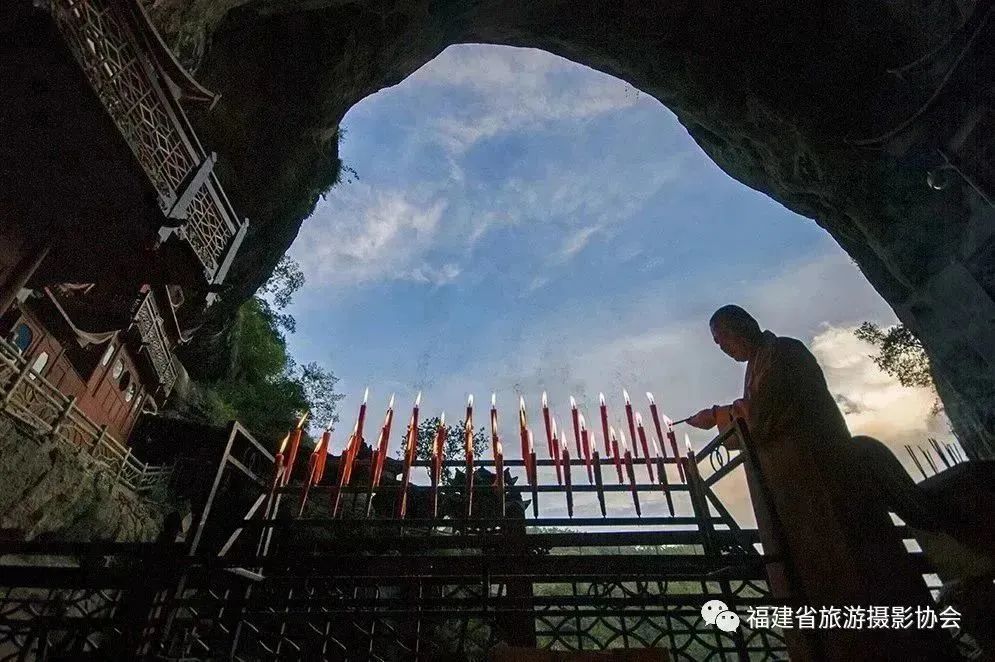

Eight Immortals Cliff
The Eight Immortals Cliff, located in Zhang Di Village of Dalong Township in Taining, is the highest Danxia peak along the southeastern coast. Composed of eight similar red cliff formations, it presents a majestic and spectacular view with dense forests and towering ancient trees. The cliff walls are dotted with eagle nests and caves, and eagles can often be seen soaring in the blue sky.
From a distance, the eight peaks appear both separate and connected, changing with every step, transforming into shapes resembling hats, shoes, or animals, truly embodying the saying “viewed horizontally, it’s a range; viewed vertically, it’s a peak; near or far, high or low, each view is different.” In the light of dawn or dusk, when a light mist shrouds the mountain peaks, it adds to the mysterious atmosphere of the Eight Immortals Cliff. An ancient poem describes it: “Eight immortal rocks stand tall and graceful, surrounded by red clouds and purple mist. When did the group of immortals leave their earthly forms? Their jade-like bones still guard the southern part of the county.”
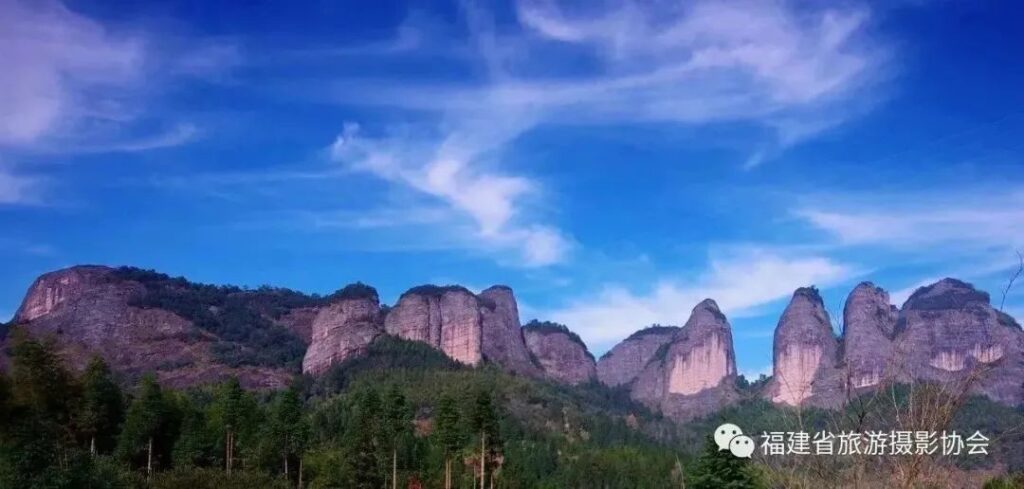
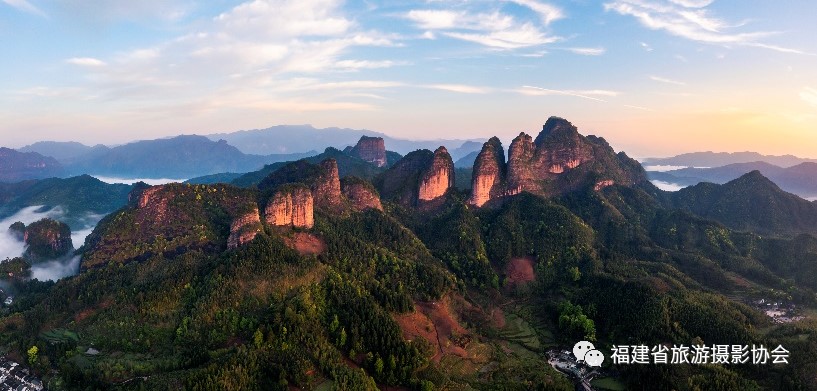
Taining Ancient City
Taining Ancient City has a long history and is known as the “Ancient Town of Han and Tang Dynasties, Famous City of the Two Song Dynasties.” It once boasted a cultural prosperity that produced “two top scholars from opposite sides of the river, four imperial scholars from one family, and nine provincial graduates from a single alley.” The city houses the best-preserved Ming Dynasty residential building complex in southern China, covering an area of over 13,000 square meters.
Walking through Taining Ancient City, visitors can appreciate the beauty of the “Best Civilian Residence in Southern China” in the mansion of a Ming Dynasty Minister of War, reminisce about the tumultuous years when the Red Army entered and left the city three times on Red Army Street, and learn about the city’s rich historical heritage from the ancient streets, houses, wells, and city walls that can be seen everywhere.






